A charge Q is uniformly distributed over a long rod AB of length L as shown in the figure. The electric potential at the point O lying at a distance L from the end A is![]()




D.


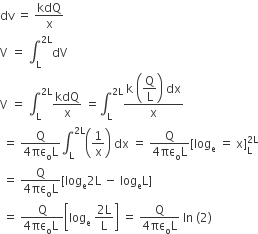
This question has statement 1 and statement 2. Of the four choices given after the statements, choose the one that best describes the two statements.
An insulating solid sphere of radius R has a uniformly positive charge density ρ. As a result of this uniform charge distribution, there is a finite value of the electric potential at the centre of the sphere, at the
surface of the sphere and also at a point out side the sphere. The electric potential at infinity is zero.
Statement 1: When a charge q is taken from the centre to the surface of the sphere, its potential energy changes by qρ/3εo
Statement 2: The electric field at a distance r(r < R) from the centre of the sphere is ρr/3εo
Statement 1 is true, Statement 2 is true, Statement 2 is not the correct explanation for statement 1.
Statement 1 is true, Statement 2 is false
Statement 1 is false, Statement 2 is true
Statement 1 is false, Statement 2 is true
C.
Statement 1 is false, Statement 2 is true


Let there be a spherically symmetric charge distribution with charge density varying as  upto r = R, and ρ(r) = 0 for r > R, where r is the distance from the origin. The electric field at a distance r ( r < R) from the origin is given by
upto r = R, and ρ(r) = 0 for r > R, where r is the distance from the origin. The electric field at a distance r ( r < R) from the origin is given by




B.

Apply shell theorem, the total charge upto distance r can be calculated as follows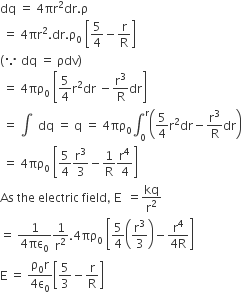
In a uniformly charged sphere of total charge Q and radius R, the electric field E is plotted as a function of distance from the centre. The graph which would correspond to the above will be
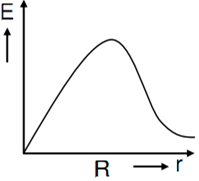
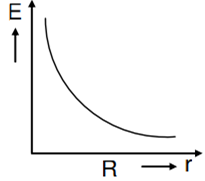
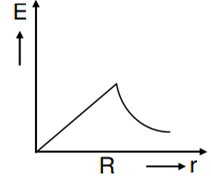

C.


